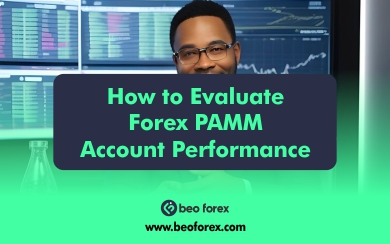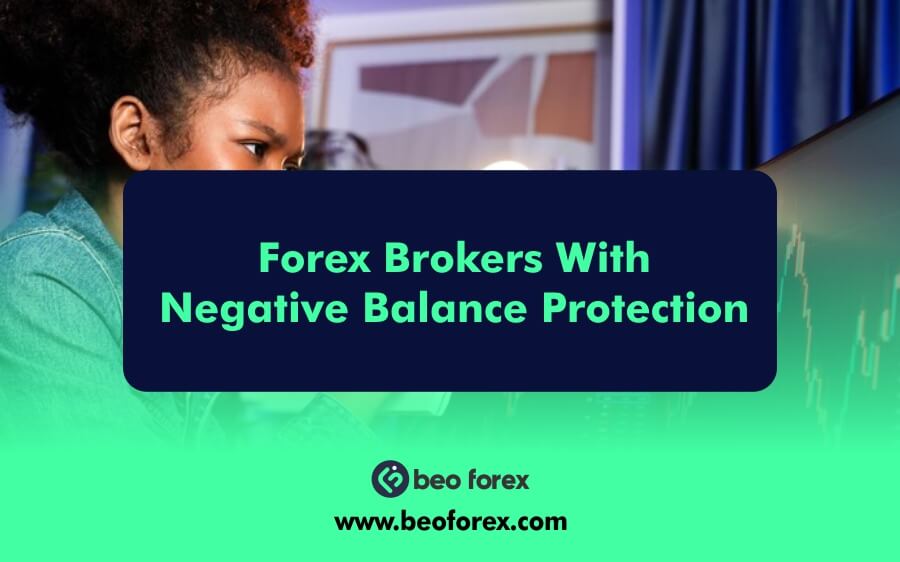How to Evaluate Forex PAMM Account Performance is an important ability for any investor who wants to increase his or her profit in this dynamic world of forex trading. As PAMM accounts grow in popularity, so does the need for proper evaluation to ensure accurate investment management. It’s crucial to assess profitability, risk management strategies, and the account manager’s performance over time. This tutorial will review the key metrics and indicators for evaluating PAMM accounts, helping you make informed investment decisions and confidently navigate the complexities of the forex market.
Key Performance Indicators
These are some of the key performance indicators that investors in Forex PAMM accounts should know well, which are critical in knowing the potential profitability and attendant risks in such investments. These have been quite useful in portraying valuable signals about the efficiency of an account manager and the general performance of the investment being made.
Return on Investment (ROI)
It is the gain on investment proportionate to its cost, thus enabling investors to understand how well their capital is used. High ROI means good performance, and this level makes it easier to compare various PAMM accounts.
Drawdown
Drawdown measures the risk of a PAMM account by reflecting the peak-to-trough decrease in value over a specific period. Both absolute and relative drawdowns indicate the account’s stability and potential capital loss for investors during unfavorable market conditions.
Risk-Adjusted Returns
It involves Sharpe and Sortino Ratios, showing the return per unit of risk taken. These ratios will allow an investor to derive if the return from a PAMM account justifies the risks involved, therefore helping them make their investment choice more stable.
Consistency of Performance
Performance analysis across various time horizons helps the investor to identify patterns of returns. The consistency in performance over a period reflects good account management and, thus, indicates a well-planned trading strategy.
Win Rate
Win rate defines the number of profitable trades vis-à-vis the total amount of trades taken up. It gives a higher return on trading strategies, though must be weighed with other indicators to ensure profitability.
Historical Performance Analysis
Historical performance analysis forms an important role in evaluation for Forex PAMM accounts. The process basically provides insights as to how well a particular PAMM account has performed in the past and helps investors before committing their funds by making informed decisions. Based on historical performance analysis, some key factors to be considered are as follows:
1. Review of Historical Data:
- Access to Performance Data: Investors should gather historical data from authentic sources, including broker platforms, third-party websites tracking the performance, or an official page of the PAMM account. Such data should contain general indicators such as return on investment, drawdown, and monthly returns.
- Selection of Time Frames: Assessing data across different time frames-such as 1 month, 6 months, 1 year, and even longer-allows investors to capture, in context, how well the account has fared in relation to market movements. Short-run performance may reflect recent trends, while performance over the long term shows how well an account maintains consistency and stability.
2. Performance Charts and Graphs:
- Graph Interpretation: Graphs of historic performance, such as equity curves and return charts, will be useful in conveying the direction of account performance visually and simply. A smoothly upward-bounding equity curve signals steady growth. Widening variations could indicate increased volatility.
- Pattern Identification: These charts should be used to identify any patterns that can describe the various forms of responses by an account manager in different market situations. This will help in predicting future behavior by the account manager and analyzing his effective trading strategies.
3. Benchmark Indices Comparison:
- Benchmarking Importance: This kind of performance benchmark by the PAMM account against relevant market benchmarks-for example, major currency indices-will allow each investor to establish a sense of relative performance. Therefore, this will be very helpful in deciding whether or not the account manager has outperformed or underperformed the market.
- Consistency in Performance: Investors should check if the PAMM account constantly outperforms the benchmark they have selected over some period of time. Where consistent outperformance is realized, it may indicate the possibility of a strong trading strategy, while underperformance will raise suspicions about the manager’s effective function.
4. Understand Market Conditions:
- Contextual Analysis: Allow for the consideration of general economic and market conditions over the assessment period. Inevitably, economic new releases, geopolitical events, and events causing volatility will have an effect on performance. This can help further contextualize investors in regard to account performance.
5. Identification of Strengths and Weaknesses:
- Performance Segmentation: Categorizations of performance into segments, such as winning versus losing trades or successful strategy versus unsuccessful, may actually drive out the strengths and weaknesses in the approach of an account manager. Such a granular presentation will support the assessment of whether the manager can actually change the game accordingly.
Manager’s Track Record
In assessing the performance of Forex PAMM accounts, a manager’s track record essentially forms the basis for evaluation. A trader’s history provides insight into his or her trading capabilities, strategies, and overall effectiveness in managing investments. The following aspects will be critical in analyzing:
- Experience and Background: A manager’s experience in years dealing with the Forex market, plus certifications, should be considered to understand his expertise. Reliability may be assumed from a history of successfully managing one’s account.
- Trading Strategy: Understand the manager’s trading approach. This includes understanding the technical or fundamental analysis, the kind of trading strategies being followed-whether short-term or long-term-and aligning the methodology with your investment goals and risk tolerance.
- Risk Management Practices: Good risk management is paramount to preserving the investor’s capital base. In this area, analysis of the manager’s risk strategies gives an idea of his skills in preventing losses in event of a market downswing.
- Performance Transparency: Generally, transparency in communication and reporting installs trust. This would thus cover the frequency of the manager in providing updates or performance metrics, such as return on investment and drawdown statistics, whereby investors can monitor the account’s progress.
- Investor Feedback, Reputation: It is good to get feedback from other investors who have invested with him in his manager account. Good ratings and participation in trading communities are usually indicative of a responsible manager who does not like to disappoint his clients.
Risk Management Practices
Position Sizing
This refers to the determination of the correct quantum of capital for each trade. A predefined position sizing scheme, like the fixed fractional method, when implemented would ensure that investors are not overexposed to any particular trade, hence securing the overall capital in the portfolio.
Stop-Loss Orders
The stop-loss order refers to an instruction to close the trade at a certain price level to stop your loss. It is of great importance to apply stop-loss orders in risk management. Where the market goes against expectations, it automatically closes for your protection against volatility.
Diversification
Diversification means a process of distributing investments among different assets or currency pairs to decrease general risks. In diversifying, investors shield themselves from the negative price movement of any single asset so that the decline in one investment cannot drastically affect the overall performance of the PAMM account.
Drawdown Management
This involves strategies put in place to contain the losses when there is a period of underperformance. The establishment of drawdown limits-for example, acceptable threshold level of maximum drawdown-instills discipline and proactive risk management whereby losses beyond a certain threshold would trigger review of trading strategies.
Regular Review of Performance
Reviews of trading performance are essential from time to time to understand how well the risk management practices are working. By analyzing the past trades, one is able to get an idea about the success rate and accordingly make refining touches to the strategies, which would definitely be an added feather in the risk management effort.
Market Analysis and Adaptation
It refers to the understanding of prevailing market conditions and economic indicators, which are essential in making informed trading decisions. Proactive market analysis by managers enables them to change strategies in time, considering different dynamics of a market, with a view to reducing losses during periods of unfavorable conditions.
Fees and Costs
Management Fees
Management fees, usually a percentage of invested capital or generated revenues, are charged by PAMM account managers for their services. High fees can significantly reduce returns, so it’s important to compare them across accounts to assess acceptable return levels.
Performance Fees
Charged based on the returns of the accrued PAMM account, the performance fee is usually a certain percentage above the profits of a predefined benchmark. While they align the interest of the manager with that of the investors, these fees also diminish net profits. The performance fee structure assists in ensuring that potentially higher returns justify the costs.
Withdrawal Fees
In some ways, this may be similar to a management fee, but with slight variation by broker or fund provider. It entails deductions for withdrawal made by the investor from his account in PAMM. Knowing such fees helps investors who would want fast liquidation of their money know how expensive it may be and could actually deter such investors from withdrawing at the right time.
Deposit Fees
The brokers may also charge deposit fees upon depositing into a PAMM account, especially when the deposit method involves currency conversion or some processing charges. Being aware of any deposit fees helps investors evaluate the total cost of entering a PAMM account.
Trading Costs
This covers spreads, commissions, and slippage tacked onto trade executions inside of a PAMM account. A crystal-clear understanding of the trading cost structure is paramount because high trading costs can eat into overall profitability.
Hidden Fees
There might also be a need for investors to beware of hidden fees, which range from administrative fees or inactive account fees to charges, perhaps for services not clearly expressed. Hence, it would take diligent research to discover any of such hidden costs involved in running the PAMM account.
Frequently Asked Questions (FAQs)
What is a PAMM account?
- A PAMM account allows investors to allocate capital for a manager to trade on their behalf, with profits and losses distributed based on the percentage of each investor’s capital.
How do I determine the risk level of the PAMM account?
- To estimate the risk level of a PAMM account, consider the manager’s trading strategy, historical performance, drawdown levels, and overall risk management practices. Analyze various statistics, such as maximum drawdown percentage and return steadiness, to assess the account’s performance under different market conditions.
What are the red flags to look out for in a PAMM account?
- Red flags include consistently high drawdowns, a lack of transparent reporting, excessively high fees, and sudden changes in trading strategy. If the manager fails to regularly update or share performance metrics, it may indicate a lack of professionalism or issues with the account.
How do fees impact my investment in a PAMM account?
- Most of the charges will be a strong hit on your overall profitability of investing in a PAMM account. Your net returns are the source from which management and performance fees are deducted, so you need to understand the fee arrangement prior to investing. High fees reduce the potential for what can otherwise be a profitable account.
























